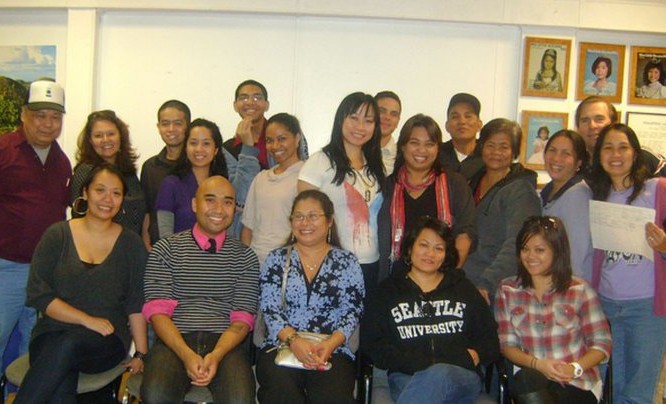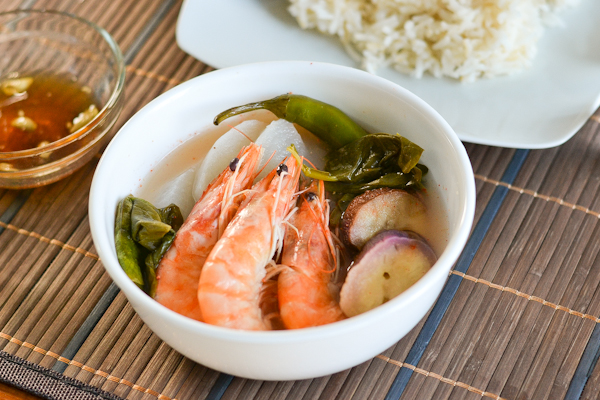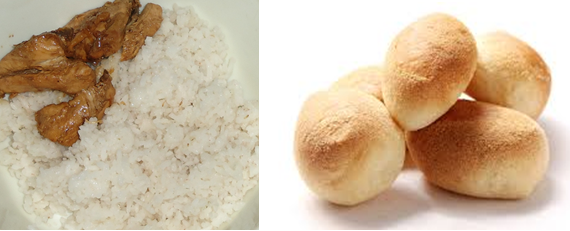Passing up on the ‘patis,’ or how to enjoy low-sodium Filipino dishes (Part 2)
By Christian CatiisChristian Catiis: White rice and Pan-de-Sal are staples in many Filipino meals. However, with the recent progression towards low-carb or carb-free diets, what is your opinion regarding the nutritional aspects of carbohydrates?
Sheena Quizon Gregg: Unfortunately, the popularity of fad diets and crash diets has given carbohydrates an unnecessary bad reputation. It is true that anything eaten in excess, including carbohydrates, will lead to weight gain but carbohydrates are essential to the diet and also maintaining balanced blood sugar related to diabetes. I like to educate my clients on carbohydrates that provide more nutrition than others and how they affect overall blood sugar. Examples of healthier carbohydrates include those high in fiber such as brown rice, fresh fruits, oatmeal, and various types of beans. Less healthy carbohydrates are those that are highly refined such as white bread, white rice, crackers, and concentrated sweets. However, all foods can be part of a healthy diet but one must prioritize being mindful of portion sizes and moderation.
CC: Soy sauce and fish sauce are notorious for having very high sodium content, with the American Heart Association now recommending for individual sodium intake less than 1500 mg/day. Although sodium is a necessary mineral in our bodies, excess sodium can lead to high blood pressure and possible heart disease. What would you consider a heathier way to enjoy dishes such as Beef steak and Adobo while still maintaining those great Philippine flavors?
SQG: Keeping flavor in food while reducing fat and sodium is one of the biggest concerns of the patients that I work with. Using a low sodium soy sauce in combination with a vegetarian fish sauce can lower overall sodium intake. However, it is important to note that though the amount of sodium listed on a sauce label can appear quite significant, one should keep in mind that this amount will be distributed throughout the dish that you are preparing and you will not be consuming that entire amount of sodium in one sitting.
CC: Hypertension, heart disease and diabetes are all common ailments that affect the Filipino community. What recommendations would you give regarding maintaining overall good health and nutrition?
SQG: I encourage my patients to limit saturated fats and trans fats which can be found in foods such as fatty meat products, whole milk, margarine and packaged foods made with hydrogenated oils. Health care providers suggest limiting the total amount of total fat that you eat to about 25 percent to 35 percent of your total calories, so for someone eating about 2,000 calories/day, fat intake may be limited to 50-75 grams of fat. Limiting saturated fat can also help reduce intake of cholesterol and sodium which is also recommended in a heart healthy diet. Foods and nutrients that are encouraged in a heart healthy diet include heart healthy omega-3 fats from foods such as salmon, tuna, walnuts or flaxseed… and foods that are high in fiber whether from fruits, vegetables or whole grains. I tell my patients as a general rule of thumb to aim for a combined 5-9 servings of fruits and veggies per day.
CC: Wow, I never knew so much consideration went into having a balanced diet. Thanks again for having the time to speak with me. To end things on a fun note, what are some of your personal favorite Filipino dishes?
SQG: My absolute favorite Filipino dishes include Chicken Asado, Pork Sinigang, and Lumpia Shanghai. Yum!
Maintaining a nutritious and well-rounded diet is important for having an overall healthy lifestyle. So while I don’t think I’ll be taking Lechon completely out of my diet any time soon, it doesn’t mean I shouldn’t enjoy it once in a while, just not every day. As with most rich foods, it should be enjoyed in moderation.
Currently living away from home to attend college means also leaving back the great cooking I have been blessed to grow up on. These dishes have a very special part in my heart; they remind me of the hours spent at the kitchen table sharing laughter and love with some of the people I am so grateful to have and have had in my life. Because to be completely honest, nothing will ever be more nostalgic than waking up to freshly toasted pan-de-sal and sticky sweet longanisa for Sunday breakfast with the pamilya.
And sure, Filipino food isn’t always the healthiest option to have at the next family barbecue or holiday get- together, but for what it’s worth, I wouldn’t mind having another plate. Kain Na Tayo! Let’s eat.
Interested in keeping in touch with Sheena? Here’s how!
Blog: http://afilipinofoodie.com/
Facebook: https://www.facebook.com/AFilipinoFoodie
Part 1: Sheena Quizon Gregg: A dietitian nutritionist…and a foodie!















Thanks for this marvelous posting! I enjoyed reading it.